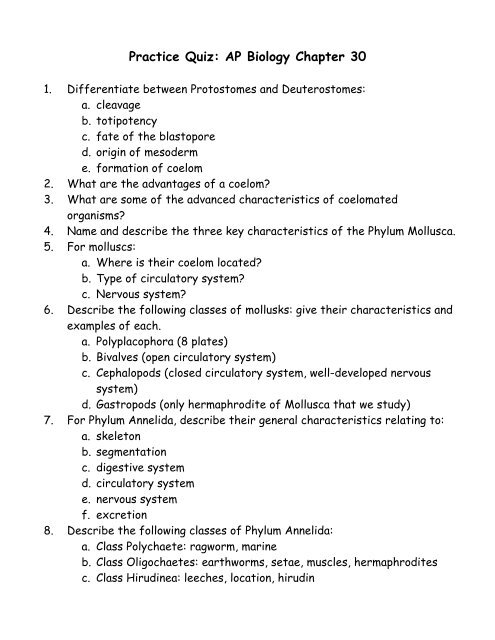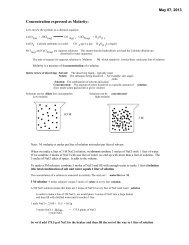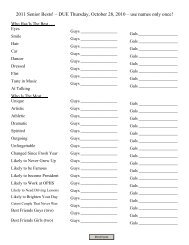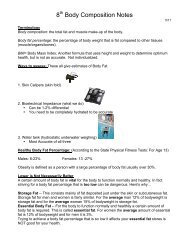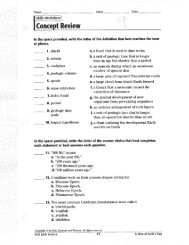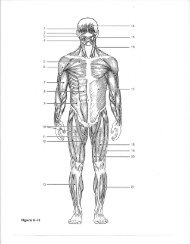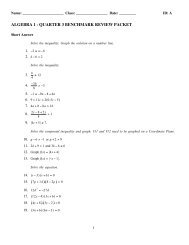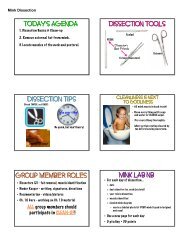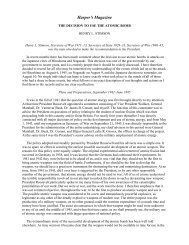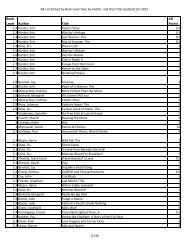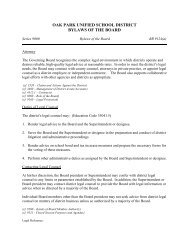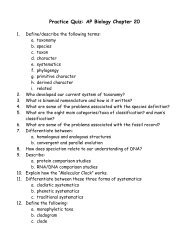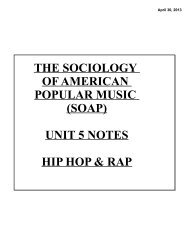Practice Quiz: AP Biology Chapter 30
Practice Quiz: AP Biology Chapter 30
Practice Quiz: AP Biology Chapter 30
Create successful ePaper yourself
Turn your PDF publications into a flip-book with our unique Google optimized e-Paper software.
<strong>Practice</strong> <strong>Quiz</strong>: <strong>AP</strong> <strong>Biology</strong> <strong>Chapter</strong> <strong>30</strong><br />
1. Differentiate between Protostomes and Deuterostomes:<br />
a. cleavage<br />
b. totipotency<br />
c. fate of the blastopore<br />
d. origin of mesoderm<br />
e. formation of coelom<br />
2. What are the advantages of a coelom?<br />
3. What are some of the advanced characteristics of coelomated<br />
organisms?<br />
4. Name and describe the three key characteristics of the Phylum Mollusca.<br />
5. For molluscs:<br />
a. Where is their coelom located?<br />
b. Type of circulatory system?<br />
c. Nervous system?<br />
6. Describe the following classes of mollusks: give their characteristics and<br />
examples of each.<br />
a. Polyplacophora (8 plates)<br />
b. Bivalves (open circulatory system)<br />
c. Cephalopods (closed circulatory system, well-developed nervous<br />
system)<br />
d. Gastropods (only hermaphrodite of Mollusca that we study)<br />
7. For Phylum Annelida, describe their general characteristics relating to:<br />
a. skeleton<br />
b. segmentation<br />
c. digestive system<br />
d. circulatory system<br />
e. nervous system<br />
f. excretion<br />
8. Describe the following classes of Phylum Annelida:<br />
a. Class Polychaete: ragworm, marine<br />
b. Class Oligochaetes: earthworms, setae, muscles, hermaphrodites<br />
c. Class Hirudinea: leeches, location, hirudin
9. For Phylum Arthropoda, describe their general characteristics relating<br />
to:<br />
a. skeleton<br />
b. segments<br />
c. nervous system<br />
d. repiration<br />
e. metamorphosis<br />
10. Describe and give examples of the four SubPhyla of Phylum Arthropoda<br />
that we studied:<br />
a. SubPhylum Crustacea<br />
b. SubPhylum Uniramia<br />
i. Superclass Insecta: body, excretion, spiracles, circulatory<br />
system, metamorphosis<br />
ii. Class Chilopoda: centipedes<br />
iii. Class Diplopoda: millipedes<br />
c. SumPhylum Chelicerata:<br />
11. Describe the characterisitcs of Phylum Echinodermata: (by the way, are<br />
they protostomic or deuterostomic?)


